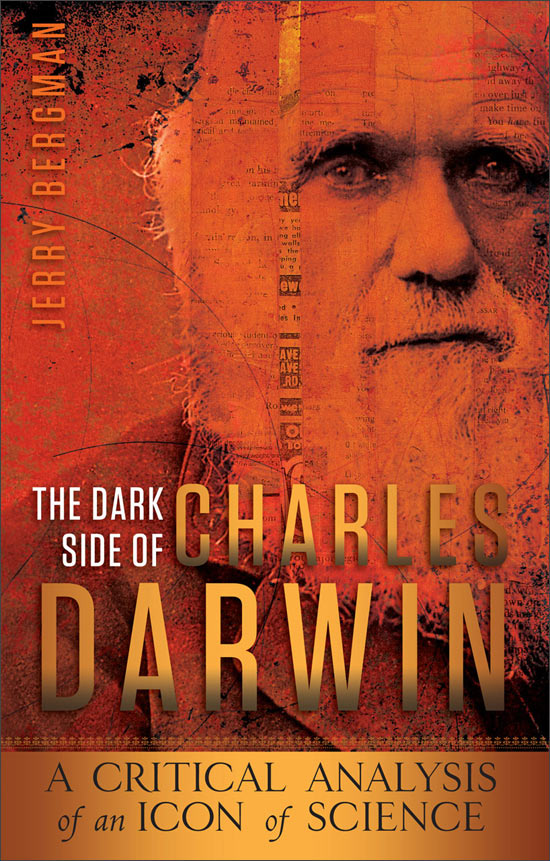Journal of Creation 37(3):33–35, December 2023
Browse our latest digital issue Subscribe
The fantasy world of eugenics: then and now
A review of: Control: The dark history and troubling present of eugenics
by Adam Rutherford
W.W. Norton & Company, New York, 2023
Author Adam Rutherford is a London-based geneticist and author of several books. He appears frequently on British television. His book provides a detailed history of the eugenics movement.
Throughout this book, Rutherford displays a pronounced bias as he repeatedly invokes the presumed danger of white nationalism. This undoubtedly colours his view of eugenics as primarily a tool to advance white supremacy at the expense of non-white peoples. Despite his questionable objectivity, I focus on worthwhile information that he presents.
This book has limited direct relevance to the creation–evolution issue. Rutherford conspicuously pays little attention to the role of the Darwinian revolution in creating and enhancing eugenics, even though this role was considerable (figure 1).
No Christian bashing
The author is clearly an atheist; he uses a small ‘g’ when mentioning the God of the Bible (p. 25). Despite being an atheist that disparages the God of the Bible, Rutherford shows an element of fairness to Christianity. He realizes that some Christians supported eugenics while others did not, just as some Christians supported slavery while others did not (p. 81). This corrects those who simplistically bash Christianity for its one-time support of this or that. Indeed, as Christine Rosen documented in her 2004 book Preaching Eugenics, the liberal churches that rejected biblical authority were on the then-trendy eugenics bandwagon. The only real opposition came from conservative Evangelical and Catholic churches.1
Science is not objective, value-free research
As noted earlier, the author does not touch on creationism or Intelligent Design. However, he inadvertently alludes to the fact that those scientists that scorn these positions as illegitimate are the pot calling the kettle black. He writes:
“However, all science is political. This is a statement that causes vexation among some who confuse the ideals of science with its reality … . Sometimes the biological and the political are deeply intertwined … . Our fundamental biology is not isolated from the architecture of our societies, nor has it ever been” (pp. 5–6).
On being gay
Rutherford has a mixed view of homosexuality. On the one hand, he endorses the view that 10% of people globally are gay (p. 33). This guesstimate is much higher, even by multiples, than most other ones. On the other hand, he rejects the usual politically correct orthodoxy that being gay is genetically inevitable and that it is unchangeable. He makes these candid remarks:
“Some people change their sexual preferences during their lives … . There is a genetic component to sexual behavior and that includes homosexuality, but those genes don’t make you gay” (p. 214).
That is a no-no. According to the politically correct Newspeak, we are supposed to say ‘sexual orientation’, and never ‘sexual preference’, because the latter implies a choice, which the gatekeepers do not want us to consider.
Many victims of Nazi German racism
Most scholarly and educational materials focus almost exclusively on the Jews. In contrast, Rutherford realizes that there were many victims as a result of Nazi German philosophy and policies. With reference to the ‘Permitting the destruction of lives unworthy of living’, he comments:
“That term—Lebensunwertes Lebens—would develop over the next few years to be central to Nazi euthanasia and eugenics, and comprised the generically mentally ill people, people with disabilities, alcoholics, homosexuals, interracial couples, criminals, and people who were sources of ‘social turmoil’, which would eventually include Jews, Slavs, Roma, Jehovah’s Witnesses and other ethnic or religious groups” (p. 118).
Eugenics did not cause the Holocaust
Unfortunately, Rutherford advances the misconception that the Holocaust itself was the product of eugenic thinking. He believes that
“Very obviously, the largest part of the Holocaust was an intention to purify the Nordic race. This was folly squared, because there is no Nordic race, and there is no such thing as racial purity” (p. 215).
The truth about the Jews is otherwise. Nazi racial policies called for the segregation of Jews from the rest of German society. However, the physical extermination of Jews arose from an entirely different consideration. Hitler plainly warned, in early 1939, that if ‘international Jewry’ caused another world war, he would destroy all of Europe’s Jews in retaliation. This became reality in late 1941, when the USA entered the war against Nazi Germany at the behest of Jewish influence (in Hitler’s mind).
Of course, eugenic killings had given the Nazis plenty of practice in killing unwanted peoples.
Even in its heyday, eugenics directly harmed relatively few people
The Nazis killed tens of millions of people overall. However, those killed for obviously eugenic reasons (such as through Aktion T4), took the lives of ‘only’ 300,000 people (p. 127). It also appears that the effects of eugenics on American policy have been way overblown. Some 70,000 people were sterilized since 1907 (p. 147). This is a drop in the ocean compared with the size of the entire American population.
Eugenics is not the tool of white supremacy after all
The author alleges that whites felt threatened by the gains made by non-whites and, for this reason, invented eugenics. He finally admits that eugenics had a broad appeal, and that this broad appeal went far beyond trying to guarantee the supposed white privilege over non-whites. He writes:
“Many playwrights, suffragists, philanthropists and philosophers, as well as more than a dozen Nobel Prize winners, embraced the ideas of eugenics as a force to change society, some with an almost religious fervor” (p. 10).
So changing society was the issue, not white supremacy.
Nor was eugenics the sole provenance of reactionaries. It was also embraced by progressives, who were supposed to be the paragons of enlightenment. Rutherford comments:
“It is appealing to think that the eugenic maintenance of existing power structures in Britain was solely the preserve of right-wing ideology, but this was not the reality… . The reduction of poverty via coercion or compulsory sterilization was not anathema to the socialism of pre-war Britain; it was part of it … . Many of the founders of the influential left-wing think tank the Fabian Society were eugenics fans … ” (pp. 86–87).
The final proof that eugenics is not the product of white supremacy is evidenced by the fact that non-whites also practice eugenics. For instance, the Chinese (92% ethnically Han) not only oppress the Uighurs, but also reportedly practice sterilization on them (p. 149).
Eugenics will neither lead to a utopia nor a dystopia in the foreseeable future
People commonly fantasize scientific progress eventually creating a world of perfect, tailor-made humans, or, alternatively, a world of slaves that have been genetically modified to make them totally unquestioning and servile. Rutherford rejects all such forms of utopias and dystopias. He contends that, even today, the making of tailor-made humans of any kind is unrealistic. He comments:
“The progress we have made in genetics since then [the Nazi era] has been spectacular, and in the last few years the pace has accelerated magnificently. But it is my contention that with our knowledge of human genetics as it currently is, the eugenic visions of Galton, Ploetz and Davenport are not much more realistic than they were a century ago. The complexities revealed in the thronging networks of endless genetic variants in human beings make selection for many of the traits targeted in the past harder to understand than in those pre-molecular days. If we were to enact eugenics policies today, would we really know what we are selecting for or against? [emphasis in original]” (p. 233).
Were it possible, would we even want a world of ‘perfect’ humans?
The essence of eugenic thinking is the improvement of the human race. Let us look at this more closely. Rutherford points out that, had the eugenics laws made in the United States and Germany been practised more widely and into modern times, humanity would have been robbed of talented people such as Woody Guthrie, Robin Williams, and many others. Had their embryos been ‘tweaked’ to correct their ‘defects’, their talents may never have emerged.
The author extends this reasoning:
“Maybe we might wander beyond the realm of known diagnoses and come to the realization that some of the more colorful characteristics of much loved historical figures were actually undiagnosed conditions that an alternate eugenic timeline might have precluded their being. Maybe Beethoven would never have existed … [nor] Isaac Newton … Abraham Lincoln” (p. 234).
Parenthetically, all this has unmentioned theological implications. Apart from considering the effects of the Fall, it helps us understand why God allows people to exist that have disabilities. No human being is a ‘mistake’. Every kind of human has worth, and every human has a contribution to make to humanity.
Conclusions
Author Adam Rutherford’s closing statement provides the most resounding conclusion, “Eugenics is a busted flush, a pseudoscience that cannot deliver on its promise” (p. 239). It is important that we not live in a fantasy world where ‘perfect’ humans can be made, thanks to scientific progress. It is also important that the history of eugenics, along with the history of many other events, not be weaponized for use in order to advance any ideology that is currently in vogue.
References and notes
- Bergman, J., The church preaches eugenics: a history of church support for Darwinism and eugenics, J. Creation 20(3):54–60, 2006. Return to text.






Readers’ comments
Comments are automatically closed 14 days after publication.